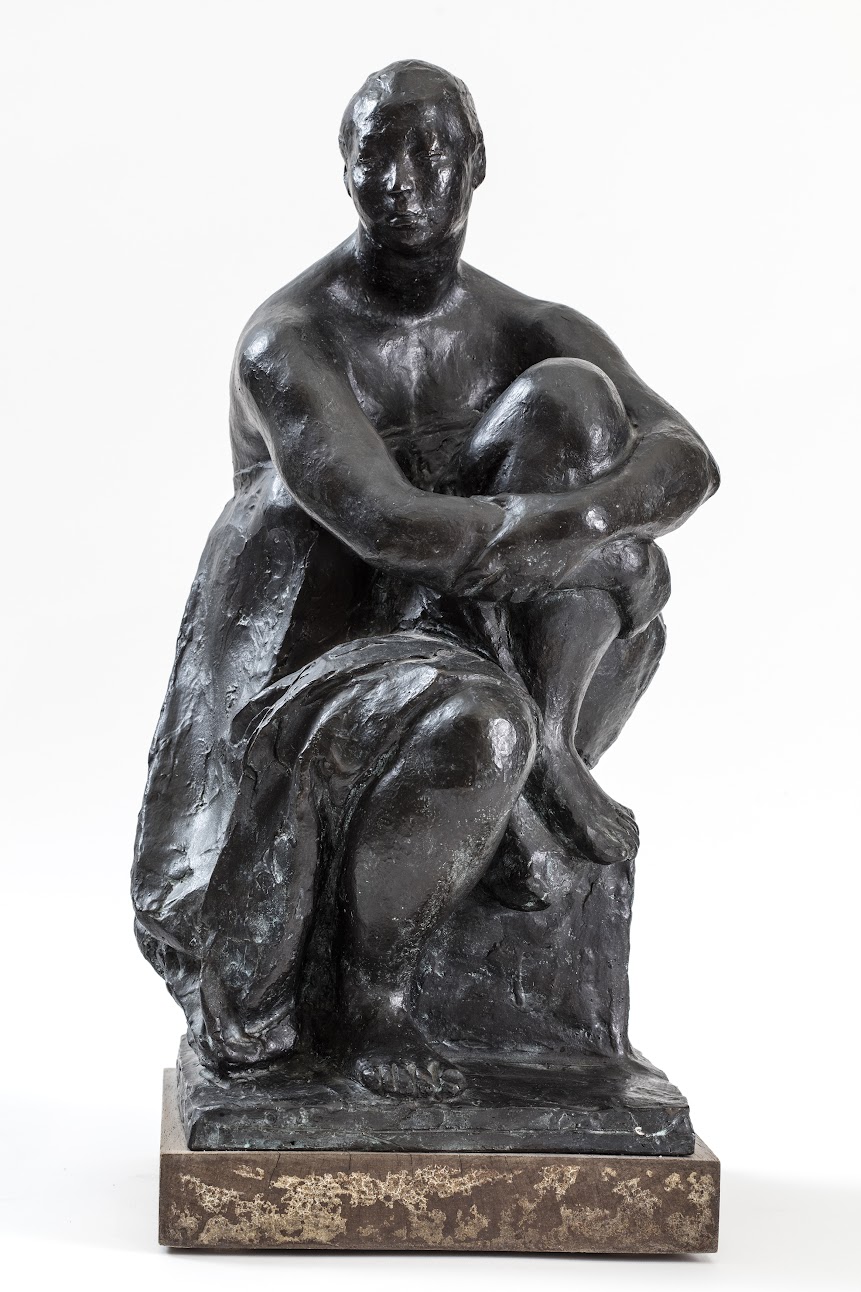Francisco Zúñiga was born on December 27, 1912, in the Guadalupe neighborhood of San José, Costa Rica. He was the son of Manuel María Zúñiga Rodríguez, a religious sculptor, and María Chavarría Calvo. From a young age, Zúñiga showed an innate talent for art, creating his first drawings and small sculptures in clay and plaster, particularly figures for nativity scenes, between 1918 and 1924. During his childhood, he began to explore the history of art through works such as “History of Art” by Warman and “Artistic Anatomy” by Strat.
Between 1925 and 1927, he worked as an assistant in his father’s workshop, where he dedicated himself to wood and stone carving, creating religious figures for local churches. In this environment, he met young sculptors like Néstor Zeledón and Max Jiménez, with whom he engaged in discussions about art and literature. Although he attended the School of Fine Arts during the 1926-1927 school year, he decided to drop out, believing that the time spent drawing from plaster models was unproductive.
From 1928 to 1930, Zúñiga began experimenting with oil painting and won second prize in sculpture at the National Exhibition of Plastic Arts in 1929. His interest in sculpture and painting was fueled by reading works by great sculptors such as Rodin and Barlach, as well as by German expressionist art, which had a significant influence on his artistic development.
In 1931 and 1932, Zúñiga consolidated his position in the art world by achieving top placements in painting and sculpture at the 3rd National Fine Arts Exhibition. His interest in Mexican muralism grew thanks to the magazine Forma, and at the 4th National Exhibition, he won first prize in painting and second in sculpture. In 1933, the artist continued to collaborate with his father on religious sculptures and began to explore the works of important Mexican artists such as Diego Rivera and José Clemente Orozco.
In the following years, the artist created a series of significant works, including murals and monumental sculptures. In 1936, he moved to Mexico, where he studied art at the direct carving school La Esmeralda. By 1938, he was appointed a professor there and remained until his retirement in 1970. In 1958, he received the first prize for sculpture from the National Institute of Fine Arts. During the 1940s and 1950s, he produced numerous monumental sculptures, collaborated with architects, and participated in international exhibitions, establishing himself as one of the most important sculptors in Mexico.
In 1959, he joined the Mexican Union of Painters, Sculptors, and Engravers, which included prominent figures such as Juan O’Gorman, Carlos Orozco Romero, and Jesús Guerrero Galván.
Throughout his life, Zúñiga received numerous distinctions and awards, distinguished by his skill in stone, bronze, and ceramic sculpture. In 1986, he acquired Mexican nationality and continued to produce works until his health deteriorated in the 1990s. He passed away on August 9, 1998, at his home in Tlalpan, Mexico.
Zúñiga left a legacy in Latin American art, exploring themes of identity, motherhood, and culture through sculptures that reflect his deep respect for pre-Hispanic traditions and his love for the human figure. His work continues to be celebrated and exhibited in museums around the world, securing his place among the great masters of 20th-century sculpture.

Sign up to the newsletter and stay informed about our latest acquisitions and exhibitions:
© Galerie Rousset 2023